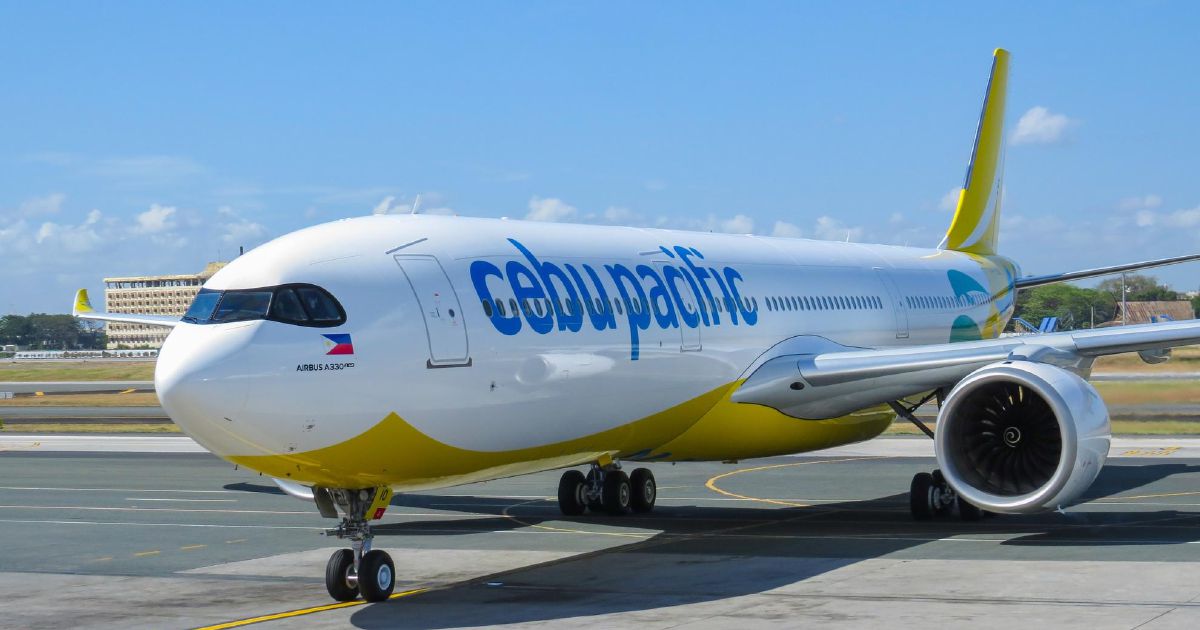KUALA LUMPUR: Cebu Pacific is set to end 2025 on a high note, aiming to carry about 28 million passengers and grow its fleet to 100 aircraft, a milestone that cements its position as the Philippines’ biggest and most dynamic airline.
Cebu Pacific’s chief executive officer, Mike Szucs, said despite the challenges that the low-cost carrier went through during the pandemic, it has been able to deliver significant growth ahead of its competitors in the Philippines, namely Philippine Airlines and AirAsia Philippines.
“We are going to be about 28 million passengers this year… That’s where we are, and that’s our story. We are ending the year strong with 100 aircraft and close to 28 million passengers,” he told a media briefing recently.
From January to September 2025, Cebu Pacific flew nearly 20 million passengers, a 13.9 per cent increase from 17.5 million in the same period last year. Domestic passengers grew 12.7 per cent to 14.9 million, while international passengers rose 17.7 per cent to 5.1 million.
The airline’s seat load factor averaged 84.8 per cent, with total capacity increasing 14 per cent to 23.5 million seats.
Cebu Pacific carried a record 24.5 million passengers in 2024, up 17.6 per cent year-on-year.
By end-2025, the low-cost carrier’s fleet would comprise 18 Airbus A320ceo (current engine option), 22 A320neo (new engine option), seven A321ceo, 19 A321neo, 12 A330neo, 18 ATR 72-600, two ATR 42-600, and two ATR-500F (freighter).
Cebu Pacific is currently the largest operator of A330neo aircraft in the Asia Pacific region, while 72 per cent of its fleet comprises neo-engine aircraft.
“It’s a really good aircraft (A330neo) for us. It delivers the lowest unit costs and the lowest carbon footprint of any commercial aircraft in the world. It’s a super-efficient aircraft and we use it on the thick routes, and we use it in slot-constrained airports. And it’s fabulously purposed for that,” Szucs said.
Cebu Pacific continues to dominate its home market with a staggering 57 per cent domestic market share.
Szucs said the airline’s domestic market share is expected to reach 58 per cent to 59 per cent by year-end.
He added that the carrier’s focus remains firmly on its domestic market, which accounts for about 70 per cent of its total seat capacity.
The airline boasts the most extensive network in the Philippines, with 63 destinations and 124 routes.
“Where do we focus first? We focus on our domestic market because there are 150 million people in there (the Philippines), and they are increasingly wealthy. A lot of the flying is intra-country because it’s an archipelago of 7000-plus islands, and there isn’t an awful lot of other forms of transport,” Szucs said.
Cebu Pacific’s extensive domestic network linking major cities such as Manila, Cebu and Davao to secondary destinations has helped cement its position as the carrier of choice for Filipinos.
Szucs said that the budget carrier’s domestic dominance was not just about market share but also about accessibility and affordability.
While Cebu Pacific’s roots are in the Philippines, its wings continue to spread across Asia Pacific. The airline’s short-haul and regional network is growing rapidly, serving destinations within a four-hour flight radius from Manila.
“Short-haul flying is ideally suited for low-cost carriers, or rather low-cost carriers are perfectly suited to deliver short-haul fly… Within four hours flying time of Manila are two billion people. That’s quite a lot of people. It’s a very large addressable market and that is our market,” Szucs said.
He added that the A330neo fleet plays a strategic role in Cebu Pacific’s regional growth. Although the aircraft operates long-haul routes to Dubai, Melbourne and Sydney, its primary purpose is to boost capacity on high-demand regional routes such as Singapore, Hong Kong, Japan and Bangkok, where airport slots are limited.
“We also use it domestically as well on Manila-Cebu and Manila-Davao, and we are opening up Puerto Princesa recently, and Iloilo should come next year as well,” Szucs said.
Cebu Pacific’s growth story mirrors that of the Philippines itself. The country’s rapidly expanding middle class and young, upwardly mobile population are fuelling demand for affordable air travel.
“The Philippines is exactly the opposite (of many other countries). Yes, people are getting old but look at this enormous bulge of young, increasingly educated, increasingly wealthy people. This is the growing middle class. When you go around the world, it is the middle class that drives economic growth,” Szucs said.
He added that the Philippines, with its population expected to surpass 120 million by the end of the decade, represents a vast and resilient travel market.
Cebu Pacific had also recently been recognised as Asia’s Low-Cost Carrier of the Year by the Centre for Asia Pacific Aviation (CAPA).
Szucs said the award recognises the passion and commitment of Cebu Pacific’s team to ensure that flying remains safe, affordable and accessible for its passengers.
“As we expand our reach, our purpose remains clear – to connect people and communities and to help fuel tourism and economic growth across the Philippines and the Asia Pacific,” he said.
© New Straits Times Press (M) Bhd






